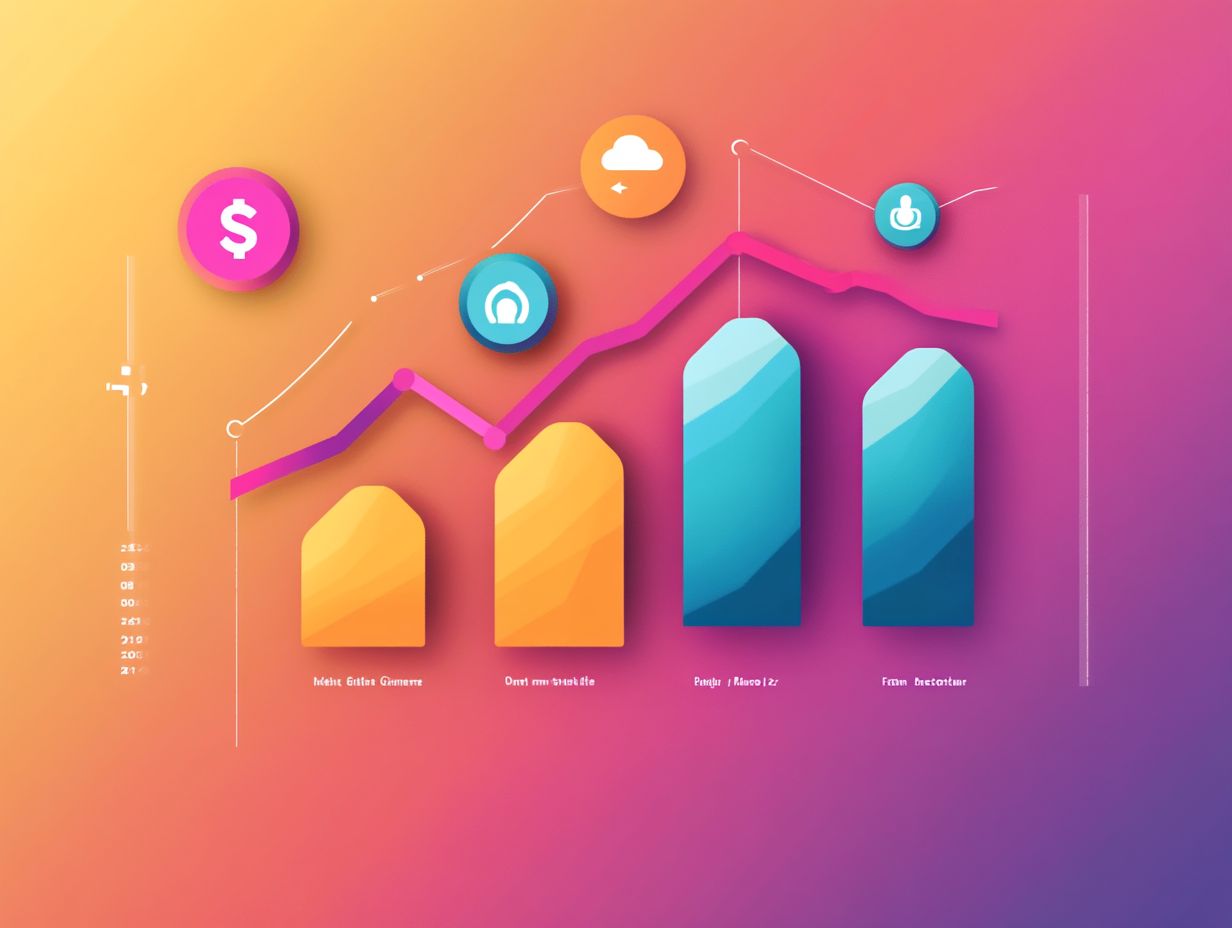5 Key Metrics for Social Media Lead Generation Success
Let's Set Up Your Lead Generation Strategy
Fill out the form below, and our team will get in touch with you to create a tailored solution for your business.
In today s digital landscape, measuring the success of your social media lead generation is absolutely vital for your business to thrive. This article delves into five essential metrics Conversion Rate, Click-Through Rate (CTR), Cost Per Lead (CPL), Engagement Rate, and Return on Investment (ROI) that will guide your strategic decisions. Understanding these metrics is crucial for tracking results and refining your marketing efforts.
You’ll also explore industry standards, common pitfalls to avoid, and ways to seamlessly integrate these metrics into your overall marketing plan. Furthermore, you’ll discover insights and tracking techniques that can enhance your social media strategy and boost audience interaction. Prepare yourself to supercharge your social media strategy today!
Contents
- Key Takeaways:
- 1. Conversion Rate
- 2. Click-Through Rate (CTR)
- 3. Cost Per Lead (CPL)
- 4. Engagement Rate
- Let's Set Up Your Lead Generation Strategy
- 5. Return on Investment (ROI)
- How Do You Measure Social Media Lead Generation Success?
- Let's Set Up Your Lead Generation Strategy
- Frequently Asked Questions
- Let's Set Up Your Lead Generation Strategy
Key Takeaways:

- Conversion rate is the most important metric for measuring social media lead generation success.
- CTR and CPL are crucial for evaluating the effectiveness of your social media ads.
- Engagement rate reflects the level of interaction between your brand and followers on social media.
1. Conversion Rate
The conversion rate is an important measure in your digital marketing arsenal, revealing the percentage of users who take that all-important desired action, whether it s filling out a form or making a purchase. This metric is crucial for assessing the effectiveness of your lead generation strategies across various channels, especially on social media platforms like Facebook, Twitter, and LinkedIn. Here, targeted ads can significantly influence audience interaction and engagement metrics, contributing to your overall brand health.
Understanding how to calculate conversion rates simply divide the number of conversions by total visitors and then multiply by 100 enables you to pinpoint your campaign’s success. This insight is invaluable for optimizing your marketing tactics and enhancing lead generation efforts.
Tools like Google Analytics simplify this process by providing detailed tracking of conversion metrics, allowing you to analyze user behavior effectively. Incorporating UTM tags (which help track the performance of campaigns) helps you attribute conversions to specific campaigns, making it easier to measure their effectiveness and refine your strategies based on real-time data. Utilizing social media analytics tools can further enhance your understanding of user engagement and traffic conversions.
2. Click-Through Rate (CTR)
Click-Through Rate (CTR) is an essential performance metric that gauges the effectiveness of your online advertising campaigns. It reveals how often people click on your digital ads or links, serving as a reflection of audience engagement and the content’s relevance in attracting potential leads through social media ads.
To calculate CTR, divide the number of clicks your ad receives by the number of times it s shown, then multiply that figure by 100 to express it as a percentage. This metric is pivotal for assessing campaign performance and informs your decisions regarding ad spending and strategic adjustments.
Crafting a well-designed social media ad can significantly enhance your CTR. Engaging visuals paired with compelling calls to action often result in increased user interaction, driving more traffic conversions and enhancing your audience growth strategy.
It s vital to consider how CTR relates to other engagement metrics like conversion rates and impressions. To maximize CTR, focus on creating targeted content tailored to specific audience segments, ensuring that your message resonates effectively with your intended demographic.
3. Cost Per Lead (CPL)
Cost Per Lead (CPL) is a critical metric for business leaders focused on optimizing lead generation efforts. It represents the total cost incurred to acquire a single lead. Evaluating CPL is crucial for assessing the efficiency of your marketing strategies and ensuring a positive return on investment (ROI). Understanding this metric enhances your marketing insights.
To calculate CPL, divide your total marketing expenses by the number of leads generated in a specific period. For instance, if your campaign yields 100 leads at a cost of $500, your CPL would be $5. A higher CPL typically indicates inefficiencies in your marketing approach, while a lower CPL suggests effective lead generation.
This metric is crucial for strategizing your budgets, especially when you implement gated content, which refers to valuable resources requiring users to provide information for access, like e-books or webinars. These tools can attract qualified leads while managing costs. Utilizing tools like SmartInsights and SocialPilot can further refine your approach to gated content.
4. Engagement Rate

The engagement rate measures how well your content resonates with your target audience. It s calculated by assessing interactions such as likes, shares, and comments relative to your total audience size. This provides valuable insights into customer satisfaction and your brand’s overall health across various social media platforms.
Let's Set Up Your Lead Generation Strategy
Fill out the form below, and our team will get in touch with you to create a tailored solution for your business.
Understanding how engagement rates differ across platforms is key to crafting effective marketing strategies. For example, you might find that Instagram often delivers higher engagement than LinkedIn, indicating that tailored approaches are necessary.
Don t wait start creating compelling content now to boost engagement! Focus on content that captures attention and encourages interaction. Utilizing social listening tools can help gauge audience sentiments and preferences, while fostering community participation strengthens connections.
Consider employing tools like Sprout Social, which are invaluable for tracking engagement metrics. They allow you to refine your strategies based on real-time data, enhancing your overall performance.
5. Return on Investment (ROI)
Return on Investment (ROI) is an essential gauge for measuring the profitability of your marketing efforts. It quantifies the financial returns generated from your investments in lead generation strategies, social media ads, and various marketing activities. This insight allows you to supercharge your campaigns for even better results!
To calculate ROI in lead generation and social media marketing effectively, start by clearly defining your total investment costs. This should cover everything from ad spend to content creation and personnel expenses. Once you’ve established these figures, evaluate the revenue generated from leads acquired during specific campaigns. For example, a well-executed social media campaign that boosts brand awareness and leads to measurable sales increases can showcase substantial ROI. To enhance your strategy, consider tracking the 5 metrics to track for social media lead success.
By consistently tracking key metrics such as conversion rates and customer acquisition costs, you can pinpoint successful strategies and optimize future campaigns. This proactive approach positions you to secure higher returns in the fast-paced digital landscape, especially when analyzing reach metrics and impressions count.
How Do You Measure Social Media Lead Generation Success?
Measuring the success of your social media lead generation requires a thorough analysis of various metrics, including engagement metrics, conversion rates, and audience growth. These elements provide a comprehensive view of how effectively your marketing strategy engages users and converts them into leads. You can leverage tools like UTM tags for precise tracking of campaign performance.
These important metrics are essential for understanding the health of your marketing efforts. For example, engagement metrics such as likes, shares, and comments reveal how well your audience resonates with the content. This gives you insights to refine your messaging. Tracking conversion rates allows you to assess how effective your calls to action are, helping you adjust tactics for improved efficiency. Additionally, focusing on 5 key metrics for B2B lead generation shows the expanding reach of your campaigns, highlighting potential for lead generation.
By consistently analyzing these insights, you can dynamically pivot your strategies. This ensures they align with audience preferences and optimizes your overall performance through effective social media metrics tracking.
What Are the Industry Standards for These Metrics? How Do They Relate to Social Media?
Understanding industry standards for key metrics like engagement rate, conversion rate, and click-through rate is essential for benchmarking your performance against competitors. This helps pinpoint areas for improvement in your social media marketing strategy. Utilizing marketing experts can offer deeper insights into these benchmarks.
Engagement rates typically hover around 1% to 3% across most industries, while conversion rates can vary widely, ranging from 1% to 5% depending on the sector. These established benchmarks provide invaluable insights, enabling you to evaluate your performance against these standards. You can uncover potential opportunities for optimization, especially regarding brand awareness and audience growth.
It’s important to recognize the variability in metrics across different sectors and social media platforms. Brands in fashion or consumer goods may experience significantly higher engagement rates on visually-driven platforms like Instagram compared to B2B companies. This highlights the necessity of tailoring your strategies to suit specific audiences and channels.
How Can You Improve These Metrics for Better Lead Generation and Customer Retention?

Improving key metrics for lead generation demands a strategic approach that draws from the expertise of marketing professionals. Focus on enhancing audience interaction through compelling content and targeted social media ads designed to elevate engagement rates and drive conversions.
To achieve these objectives, create engaging blog posts that answer your audience s questions. Craft high-quality, informative content that truly resonates with your target audience, much like the successful campaigns executed by HubSpot. They harnessed personalized email strategies alongside engaging social media posts, resulting in a remarkable boost in their lead generation metrics.
Let's Set Up Your Lead Generation Strategy
Fill out the form below, and our team will get in touch with you to create a tailored solution for your business.
Continuously optimizing social media ads through A/B testing testing two versions of an ad to see which one performs better can sharpen audience targeting and enhance ad performance.
For example, consider a campaign by Airbnb, which demonstrated that adjusting visuals and messaging can lead to a staggering 30% increase in click-through rates. By embracing these actionable strategies, you can elevate your overall marketing effectiveness and secure sustainable growth for your business.
What Are the Common Mistakes Businesses Make When Measuring These Metrics?
Many businesses often fall into the trap of common mistakes when measuring critical metrics for social media lead generation. Relying solely on surface-level numbers without grasping the context behind them can significantly undermine the effectiveness of your marketing strategy, leading to missed opportunities for audience growth and engagement.
To truly optimize your efforts, it’s essential to delve deeper into both qualitative and quantitative data. Ignoring the voices of your audience can result in a misalignment with their needs and preferences. Many overlook the importance of segmenting their audiences, which leads to generalized strategies that fail to resonate with specific groups. Misinterpreting data is another hazard; what may appear as a decline in engagement could actually signal the need for a fresh approach or content strategy.
By emphasizing context, segmentation, and comprehensive analysis, you can refine your lead generation tactics and cultivate stronger connections with potential customers.
How Can Social Media Lead Generation Be Integrated into Overall Marketing Strategies?
Integrating social media lead generation into your overall marketing strategy is crucial for crafting a cohesive approach that elevates brand awareness, boosts user engagement, and ultimately drives conversions across various channels, including e-commerce and gated content initiatives.
By leveraging platforms like Facebook, Instagram, and LinkedIn, you can effectively connect with your target audience while enhancing your content marketing efforts. For instance, sharing valuable blog posts or whitepapers on social media not only attracts followers but also guides them towards email subscription forms or landing pages, creating a seamless blend of marketing tactics.
Successful companies often run email campaigns featuring social media links, encouraging recipients to share content within their networks. This strategy creates a ripple effect, amplifying your reach metrics and establishing a strong presence across multiple channels.
What Are the Future Trends for Social Media Lead Generation Metrics?
The future of social media lead generation metrics is on the brink of transformation, with emerging trends highlighting the importance of enhanced audience sentiment analysis and the growth of shopping through social media. This evolution requires you to adapt your strategies and metrics to stay ahead in an ever-changing digital landscape. Start tracking your results with social media analytics to supercharge your strategy!
As platforms roll out more sophisticated analytics tools, your understanding of consumer behavior and preferences will become crucial for fine-tuning your outreach efforts. Personalization is gaining traction, allowing you to craft tailored content that resonates more deeply with potential leads.
The ongoing evolution of social media algorithms significantly impacts your visibility and engagement. You must remain agile and proactive in adjusting your content strategies. By embracing these advancements, you can better prepare your organization for shifting dynamics, ensuring you connect with your target audiences and cultivate meaningful relationships that drive long-term loyalty.
Frequently Asked Questions

The 5 key metrics for social media lead generation success are reach metrics, engagement, conversion rate, cost per lead, and ROI metrics (which measure the return on investment from your marketing efforts).
Reach measures the number of people who have seen your social media posts, making it a crucial metric for determining the potential audience for your lead generation efforts and improving audience growth.
Curious to learn more? Dive into our detailed guides on social media strategies!
Let's Set Up Your Lead Generation Strategy
Fill out the form below, and our team will get in touch with you to create a tailored solution for your business.
Engagement is the interest and interaction your audience has with your social media content. Higher engagement means your leads are more likely to become customers!
Conversion rate shows the percentage of leads who take a desired action, like filling out a form or making a purchase. It’s crucial for tracking how well your lead generation strategy works.
Cost per lead is how much you spend on social media ads to gain one new lead. Tracking this helps you ensure your lead generation is cost-effective.
Return on investment (ROI) measures how profitable your lead generation efforts are. By tracking ROI, you can see if your strategy brings in enough revenue to cover its costs.






